
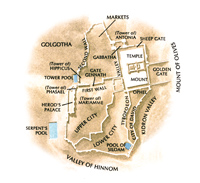
{image_1}The clearing of Jerusalem’s Second Temple Period water channel, a seven-year project, was reported in our April Dispatch. Now we’re receiving reports of what was found there. The channel runs south from Robinson’s Arch (just south of the Western Wall) along the western edge of the City of David to Siloam Pool (at the end of Hezekiah’s Tunnel). Soon it will open to the public; meanwhile, the exciting finds that were unearthed there breathe new life into the story of the destruction of the Second Temple.
Continue Reading »
{image_1} Excavators digging for a new railway station deep under the surface of central Jerusalem have discovered what geologists say is the largest underground river ever found in Israel. Professor Amos Frumkin, head of the Cave Research Unit of Hebrew University, told The Media Line, “In terms of Israel, it’s the longest underground stream that we have ever seen. It is a kind of a canyon that has been cut by the stream of the water over a long period of time.”
Continue Reading »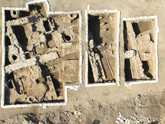
{image_1} An important 1,500-year old public building dating to the Byzantine Period has been revealed in excavations conducted by the Israel Antiquities Authority (IAA) in Akko. Although the exact function of the building has yet to be determined, IAA excavation director Nurit Feig is of the strong preliminary opinion that it might have been a church. The site was discovered near Tel Akko when construction had begun to build a new shopping mall.
Continue Reading »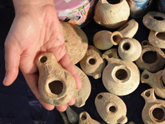
{image_1} An extensive campaign was undertaken in May to prevent the illicit trafficking in antiquities excavated and plundered from archaeological sites. In an operation conducted by the Unit for the Prevention of Antiquities Robbery, an American tour guide was identified while selling antiquities to a group of American tourists he was leading in Israel. Inspectors from the Israel Antiquities Authority (IAA) were present at one of the sales that took place in a hotel. Upon conclusion of the sale, the suspect was detained and hundreds of ancient archaeological artifacts were seized.

{image_1}
Archaeology is not just for those who have degrees and skillfully direct the digging of ancient treasure. Many volunteers, unschooled in archaeology, join authorized digs as well. When I participated for a week on a summer dig several years ago, I was surprised to see other volunteers there with their young children. Given the proper tools and a little instruction, it’s not too hard for even children, with adult supervision, to be of help to the professionals (though I’m not sure how often it’s allowed).
Continue Reading »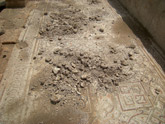
{image_1}Sadly, it has been reported that the large, 30-foot long (9-meter) mosaic at Hirbet Madras, which we covered in our April Dispatch issue, was vandalized. In late March, vandals destroyed large sections of the mosaic that was in almost pristine condition, described by archaeologist Amir Ganor as “one of the most beautiful mosaics to be uncovered in Israel in recent years,” and estimated to be about 1,500 years old.
Continue Reading »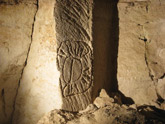
{image_1} While the Israel Antiquities Authority (IAA) archaeologists do not work in the West Bank, other Israeli archaeologists do. However, finds within the West Bank (Judea and Samaria) can be problematic. Though the West Bank is currently under Israeli control, it is “disputed” territory, since much of it is supposedly to become a Palestinian state. If that happens, what happens to everything that has been found in archaeological digs there? If Israelis found it, is it theirs, or since it was found in “Palestinian” territory, will it belong to “Palestine”?
Continue Reading »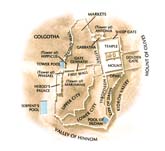
{image_1}After seven years of clearing large amounts of debris, the largest water channel from the Second Temple Period has been completed in the Old City of Jerusalem. The route of this channel follows the Tyropoeon Valley. The channel is located beneath the main paved and stepped road that traversed Jerusalem in those days. The road passed next to the Western Wall of the Temple Mount in the north and down to the Siloam Pool in the southern portion of the City of David (at the end of Hezekiah’s Tunnel).
Continue Reading »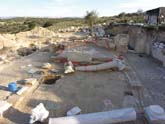
| {image_1} | |
| {image_2} | |
| {image_3} | |
| {image_4} | |
| {image_5} |
Guns and archaeologists are not a normal mix, but because of antiquities theft—a lucrative business here—the Israel Antiquities Authority (IAA), in 1985, created a theft unit that packs guns. Like other police and the military, these special “police” do ambushes, stake-outs, interrogations, and even use night-vision binoculars in their efforts to catch culprits red-handed.
Continue Reading »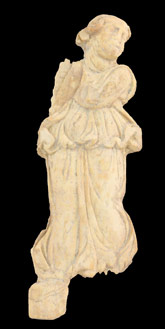
Susita (covered in our December 2009 Dispatch)—a Greco-Roman city also called Hippos and one of the 10 cities of the Decapolis—overlooks the eastern shore of the Sea of Galilee.
Continue Reading »All logos and trademarks in this site are property of their respective owner. All other materials are property of Bridges for Peace. Copyright © 2025.
Website Site Design by J-Town Internet Services Ltd. - Based in Jerusalem and Serving the World.